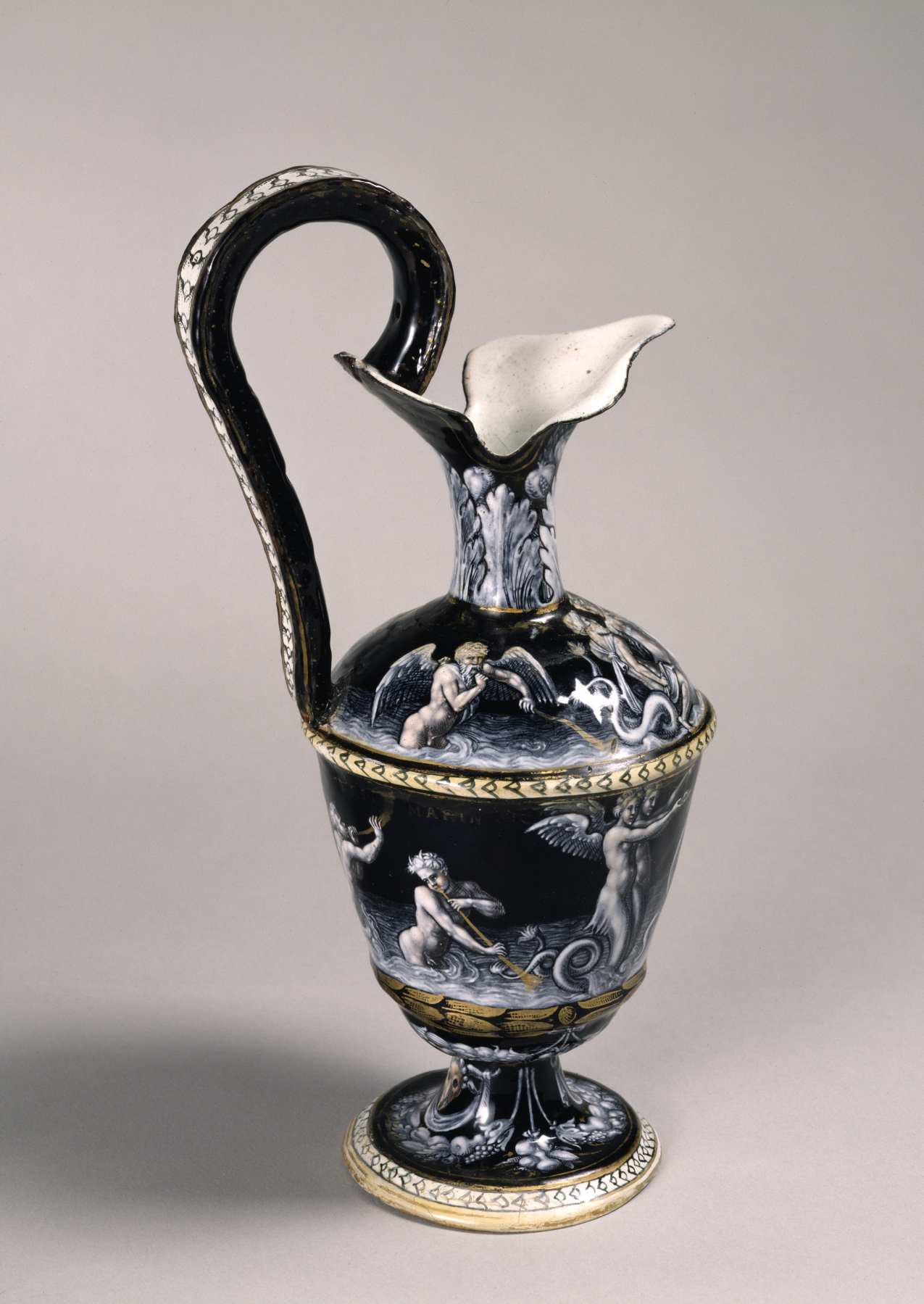Ewer with Triumph of Venus and Neptune
(Renaissance Europe )
Painted in "grisaille," this elegant ewer would originally have been paired with a basin of similar design.
Provenance
Provenance (from the French provenir, 'to come from/forth') is the chronology of the ownership, custody, or location of a historical object. Learn more about provenance at the Walters.
Sir Andrew Fountaine (1676-1753) of Narford Hall, Norfolk, England [date and mode of acquisition unknown]; Andrew Fountaine (1808-1874), [date of acquisition unknown] by inheritance; Sale of the Narford Heirlooms, London, June 16, 1884, lot 286; William A. Tyssen-Amherst (son-in-law of Andrew Fountaine, created in 1892 Baron Amherst of Hackney), Didlington Hall, Brandon, Norfolk, England [date and mode of acquisition unknown]; Sale, London, December 11, 1908, lot 60; Seligmann Brothers, Paris, 1908, by purchase; Henry Walters, Baltimore, 1911, by purchase; Walters Art Museum, 1931, by bequest.
Exhibitions
| 1999-2000 | Vive la France! French Treasures from the Middle Ages to Monet. The Walters Art Gallery, Baltimore. |
Geographies
France, Limoges (Place of Origin)
Measurements
H: 10 3/8 in. (26.3 cm)
Credit Line
Acquired by Henry Walters, 1911
Location in Museum
Accession Number
In libraries, galleries, museums, and archives, an accession number is a unique identifier assigned to each object in the collection.
In libraries, galleries, museums, and archives, an accession number is a unique identifier assigned to each object in the collection.
44.278


